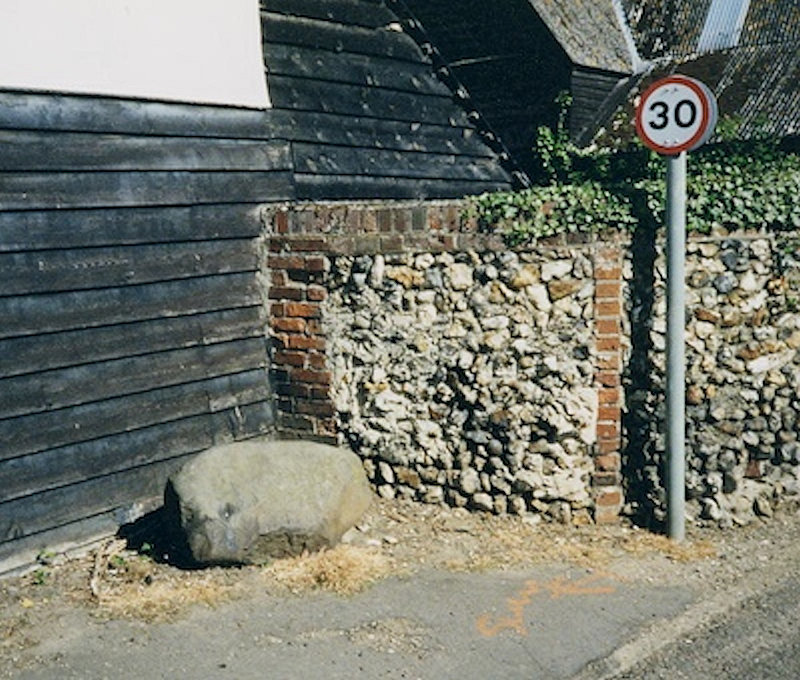The following sites have been selected to represent the different aspects of geology and landscape in the district. Not all sites have something to see; many are solely of historical interest as a record of an important or interesting discovery.
Some sites are not strictly geological but have a geological connection. Geological sites are therefore defined in their widest sense and include, for example, buildings, walls, wells, spas, springs, graves, boreholes, plaques, landslips and viewpoints.
This is not a complete list of geological sites in the district. Others will be added and descriptions expanded as further research is carried out.
Important note:
Not all of the sites here described are accessible. Some sites are on private land and can only be viewed from footpaths that pass through or alongside the site. Inclusion of a site on this list does not, therefore, imply any right of access. Please remember not to trespass on private land.
Sites of Special Scientific Interest (SSSIs)
No geological SSSIs have been notified in the district.
Local Geological Sites (LoGS)
No LoGS have yet been notified in the district as the notification process is still underway.
Other Sites
ALPHAMSTONE. Alphamstone Churchyard (TL 878 354)
There are 11 sarsen stones here, eight in the churchyard, two by the road and one in the church. There are probably more buried in the ground. The stones are erratic boulders that have been gathered here by man in the distant past from nearby fields for religious or ceremonial reasons. A unique site.
BLACK NOTLEY. Grave of John Ray
John Ray (1627-1705), Essex naturalist, contributed greatly to the advance of geology, particularly with his observations on the origin of fossils. He is buried in Black Notley Churchyard. A statue of John Ray can be seen outside Braintree Museum.
BOCKING. Churchyard wall (TL 757 257)
Wall surrounding churchyard contains numerous erratic boulders including two boulders of basalt.
BRAINTREE. Hunnable’s Gravel Pit (site of) (TL 746 228)
This former gravel pit in River Brain terrace gravel is now a grassed sunken playing field. The pit produced mammoth bones and other fossils during its working life. The site is next to the busy B1256 road (Pods Brook Road). The pit is named after F.A.Hunnable and Son, sand and gravel merchants. The steep, grassed sides of the pit can still be seen but nothing of the geology is now visible.
BULMER TYE. Bulmer Brickworks (TL 833 382)
London Clay is still being worked here for the manufacture of traditional, hand-made bricks, mostly for the renovation of historic buildings. The sandy clay in the small pit is part of the Harwich Formation (the only inland exposure of this formation) and contains layers of claystone concretions, seams of volcanic ash and, rarely, fossil sharks teeth. The brickworks is private land but tours are occasionally arranged for clubs and societies.
BURES. Bures Pit (formerly known as Ferriers Farm Pit) (TL 896 342)
Bures Pit is a large disused sand and gravel pit and the type site of the Bures Gravel, part of the Kesgrave (pre-diversion Thames) Sands and Gravels. When the pit was working the Bures Gravel was seen to be overlain by Anglian boulder clay (till) and glacial gravel. The top part of the Bures Gravel is thought to represent an arctic soil. The pit is currently used as a centre for off road motor sport. Permission to visit should be obtained from the owners.
COLNE ENGAINE. St. Andrews Church (TL 5850 2304)
The hilltop church of St. Andrews is one of the best churches in Essex for the variety of local stones in its external walls, including septaria and glacial erratic cobbles.
FINCHINGFIELD. Finchingfield Boulder (TL 6849 3290)
A splendid boulder of basalt 85 centimetres long lies by the roadside on the left hand side a few metres from the village green on the road north out of the village. This boulder was probably transported south from Northumberland or Scotland by the Anglian ice sheet. Large erratic boulders of basalt are very rare in Essex.
FAULKBOURNE. Brain Valley Tufa Springs.
In the valley of the River Brain north-west of Witham there are deposits of calcareous tufa that have been formed over thousands of years by springs issuing fromthe Kesgrave Sands and Gravels. In places it is sufficiently hard to have been used as a local building stone when it is known as travertine. It has been used for the dressings of St. Germanus Church in Faulkbourne.
GESTINGTHORPE. Gestingthorpe Crossroads Boulders (TL 811 388)
Two sarsen stones by the crossroads, the largest 1.2 metres long.
GESTINGTHORPE. Moat Farm Sarsen Stone (TL 816 367)
1.2 metres long sarsen stone with a fine mammilated surface.
GESTINGTHORPE. Nether Hall Farm Sarsen Stones (TL 809 393)
Nine sarsen stones on roadside by farm entrance, the largest 2.4 metres long.
GLEMSFORD (Essex side of border). Glemsford Picnic Site. (TL 8319 4640)
The Glemsford Picnic Site is on the Essex side of the Suffolk border and situated above one of the most striking drift-filled channels, or buried ‘tunnel valleys’ in East Anglia. Carved by sub-glacial meltwater under intense hydrostatic pressure, the valley is now completely filled with drift (glacial sand, gravel and clay) and there is no trace of it at the surface. The buried valley floor beneath your feet here plunges to well below sea level; the thickness of drift beneath the present valley floor being 143 metres (470 feet). The picnic site provides an excellent opportunity to inform visitors about this remarkable geological feature. The site is next to the flooded gravel pits of Glemsford Pits SSSI.
GOSFIELD. Gosfield Pits Nature Reserve. (TL 786 296)
Former sand and gravel pits now a nature reserve owned and managed by the parish council. Minor exposures of Kesgrave Sand and Gravel (pre-diversion Thames).
HALSTEAD. Stonebridge Hill Sarsen Stone (TL 838 291)
Conspicuous sarsen stone 1.4 metres long sits on the grass by the road outside Parley Beams Farm.
OVINGTON. Ovington Hall Sarsen stone (TL 763 426)
An exceptional sarsen stone, 2 metres long with a mammilated surface, can be seen near the churchyard on the track leading to Ovington Hall.
TWINSTEAD. Twinstead Sarsen Stone (TL 861 367)
Large sarsen stone 1.5 metres (5 feet) long outside the churchyard and a smaller one on the other side of the track.
WHITE NOTLEY. White Notley Puddingstone (TL 788 177)
By a cottage gate is a fine, colourful boulder of Hertfordshire puddingstone 1.1 metres long. This boulder has been referred to in articles and books more often than any other puddingstone in Essex.
WICKHAM ST. PAUL. Nether House Farm Sarsen Stones (TL 839 365)
At either side of the entrance to the farm are two fine sarsen stones, the largest is 1.5 metres tall and in an upright position.
WICKHAM ST. PAUL. Wickham Hall Farm Sarsen Stones (TL 827 372)
By the road, at the entrance to Wickham Hall Farm near All Saints Church are several sarsen stones. The largest is 1.8 metres long.
WITHAM. Witham Spa (site of) (TL 8114 1537)
Witham briefly enjoyed a period as an affluent spa town in the 18th century and was very popular with visitors who came to drink the spring water, which had supposed curative properties. It is commemorated by the name of Spa Road and several houses such as Spa Place, a listed building that was built for the physician.

